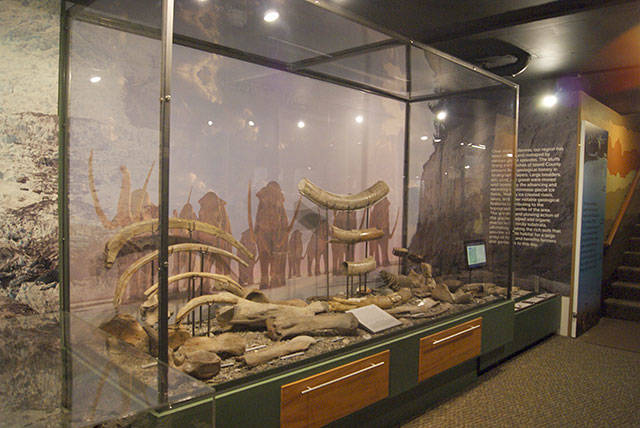Island County Historical Museum is officially dedicating a newly-opened prehistory exhibit at a free open house 5-6 p.m. Thursday, July 19.
The “Dale Conklin Prehistory Exhibit” features some of the myriad of mammoth bones and an ancient tree, flattened by glaciers, discovered by amateur paleontologist, Dale Conklin and his associates.
Conklin, nicknamed the “The Mammoth Hunter” moved to Whidbey Island in 1979 and dedicated the rest of his life to finding, mapping and identifying the bones of the mammoths that roamed the island for thousands of years.
Conklin passed away in 2009, but his collection of mammoth bones has been kept on permanent exhibit at the Museum.
“The Mammoth exhibit is one of our most popular,” museum director Rick Castellano said in a prepared release. “Our visitors are always amazed at the fact there were giant elephants living on the island, and that they were apparently providing a food source for the earliest residents here.”
While the mammoths have been extinct for some 12,000 years, many of the bones show what appears to be evidence of butchering, the press release states, and early arrowheads known as clovis points have also been discovered on the island, which date back to about the same period.
“The evidence is compelling that mammoths may have been hunted into extinction by early humans — perhaps the ancestors of the Lower Skagit people,” Castellano said.
The newly designed “Dale Conklin Prehistory Exhibit” will be dedicated to honor Conklin and his discoveries.
Also featured at the museum is a section on the geology of Whidbey Island, and how glaciers shaped the island.
Members of Conklin’s family will be in attendance at the open house, the press release states.
“Dale wrote that he hoped people would be looking at the mammoth bones for thousands of years. We’re going to do our best to make sure that happens” Castellano said.
• The museum is located at 908 N.W. Alexander St., Coupeville.


